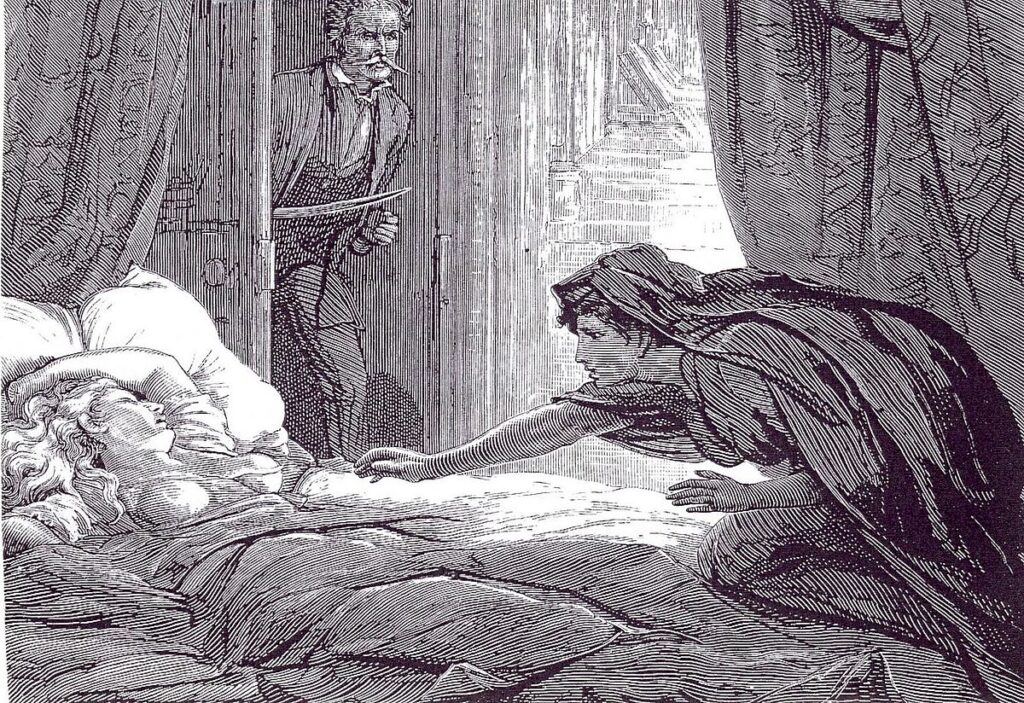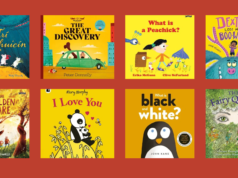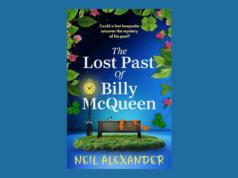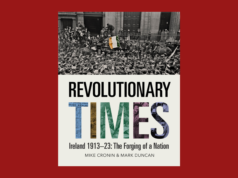
Miles Leeson
Where does the Irish vampire begin? You’d be forgiven—just—by thinking it is with Stoker’s Dracula, itself having spawned a great many imitators since it was first published in 1897. It’s arguable that Stoker provides the template for vampire fiction in the twentieth century, yet this was his one (and only) major success in publishing. He himself draws on and appropriates a much longer historical tradition, stretching back through the nineteenth century to Le Fanu’s Uncle Silas (1864) and the wonderfully dark ‘Carmilla’ from 1872, to Maturin’s Melmoth the Wanderer, published in 1820. That these works are Anglo-Irish, and speak to us from that background, should also not go unnoticed.
Although the first recognised reference to the ‘vampyre’ was in a travel journal published in England in 1745 (although earlier dates have now been proposed), the fear of a creature rising from the grave to consume the blood of the living was prevalent in Eastern European folklore from as early as the tenth century; and this itself was drawing on Near Eastern literature stretching back over centuries. Its arrival into the oral tradition of Irish literature is shrouded in mystery but, clearly, travellers returning both from England and continental Europe brought with them more than just news. Given Ireland’s long and diverse folklore tradition, it seems natural that the vampire would find a space within the developing genre of Irish Gothic literature, itself growing out of the ancient oral fairy tales of Ireland. Maturin’s tale, unlike those of Le Fanu and Stoker, begins in Ireland but doesn’t remain there—much like Stoker’s novel, his story of interrelated tales moves across borders.
The book opens with John Melmoth visiting his dying uncle in Dublin; he finds there a portrait of an ancestor: ‘John’s eyes were in a moment, and as if by magic, riveted on a portrait that hung on the wall … there was nothing remarkable in the costume, or in the countenance, but the eyes John felt were such as one feels they wish they had never seen, and feels they can never forget’. The story surrounding the portrait of the original ‘Melmoth’ draws us back into the past: a Faustian pact between an ancient ancestor who, whilst not immortal, will live for 150 years or more and has to tempt another into damnation. Drawing on earlier sources, including Polidori’s The Vampyre,published just a year prior to Melmoth, Maturin’s long novel of the wandering undead is inspirational for the two authors who followed him in this genre.
Le Fanu’s short story ‘Carmilla’ is much more in keeping with what we would expect from a classic vampire tale. Here, the undead are invited in to a remote country house following a carriage accident on a local road, but what is original to Le Fanu’s work is the development of the female vampire who preys on the innocent, virginal Laura, the mistress of the house. This is heightened by the addition of the developing relationship between Laura and Carmilla, one that has strong lesbian undertones. Although the story itself is not set in Ireland but in central Europe, there are certain echoes of the distanced Anglo-Irish family from those around them, and the relationships that define them. The deference of the minor characters and servants to Laura and her father reflect the distinctions in Ireland at the time of publication. The blood-lust, and possible blood-ties, that join Laura and Carmilla are certainly like two lovers:
Sometime after an hour of apathy my strange and beautiful companion would take my hand and hold it with a fond pressure, renewed again and again; blushing softly, gazing in my face with languid and burning eyes, and breathing so fast that her dress rose and fell with the tumultuous respiration. It was like the ardour of a lover; it embarrassed me; it was hateful and yet overpowering; and with gloating eyes she drew me to her, and her hot lips travelled along my cheek in kisses; and she would whisper, almost in sobs, “You are mine, you shall be mine, and you and I are one for ever.” Then she has thrown herself back in her chair, with her small hands over her eyes, leaving me trembling.
Carmilla, of course, intends to change Laura into the undead so that they can be with each other forever. Once she has been identified as ‘Millarca’, Countess Karnstein, she must be destroyed as she threatens the natural order but, and more importantly, the hold men have over women. It is no surprise then that the discovery of her tomb, her staking and her beheading are all carried out by men, much as they will be in Dracula against Lucy Westenra once she has become a vampire herself.
Stoker’s novel is, of course, the best known. He borrows freely from both Maturin and Le Fanu; indeed, his work is a pastiche of these works and typical Gothic tropes: his became the most popular following the sale of the film rights by his widow in 1929. Unlike Carmilla and Melmoth, who are more or less confined to either a single victim or a geographic location, it is Dracula’s invasion of London, the fear of a foreign ‘other’ come to upset the established order, which caused the real terror for nineteenth-century readers. The set pieces—like the three female vampires preying on Jonathan Harker in Dracula’s castle, or the turning of Lucy—are chilling, but the threat of invasion (much like Stevenson’s invasion of Mr Hyde into London) underscores the threat. That Dracula is both degenerate and superhuman in strength and intelligence only serves to heighten this; let’s not forget the fear at the end of the nineteenth century of the immigration of the Irish into England. That vampire novels are now an established part of genre fiction can be attributed to Stoker, although literary fiction of the twentieth century, like Murdoch’s The Unicorn from 1963, looks back to Le Fanu, not to Stoker.
It is Le Fanu’s work, particularly ‘Carmilla’, that hovers over the pages of The Unicorn, one of Murdoch’s early Gothic novels. Here, it is Hannah, the entrapped mistress of the house, who is given Carmilla’s physical condition and makes demands of the female narrator of the story, Marian Taylor, who both loves and hates her for how she has entrapped the other characters in the novel. Marian wishes to free Hannah, but becomes (much like Hannah’s servants) seduced by her and, although wishing to free her, becomes part of her domestic court. Hannah can be seen preying in a ‘languid and insatiate’ way on her servants, who in turn can be perceived as both human and yet deadened. As she tells them all late in the novel: ‘I have battened upon you like a secret vampire’. Of course, this isn’t the only literary example—John Banville’s Birchwood (1973) and William Trevor’s Fools of Fortune (1983) continue in this tradition, to say nothing of the more generic works of fiction in this area that have seen a renaissance in the last twenty years.
Perhaps you’ve already read Dracula, and you’ve almost certainly seen one of the film versions; so, where to go next? If you haven’t read Le Fanu’s ‘Carmilla’, now would be a great time to pick it up.
Miles Leeson is the Director of the Iris Murdoch Research Centre at the University of Chichester.











